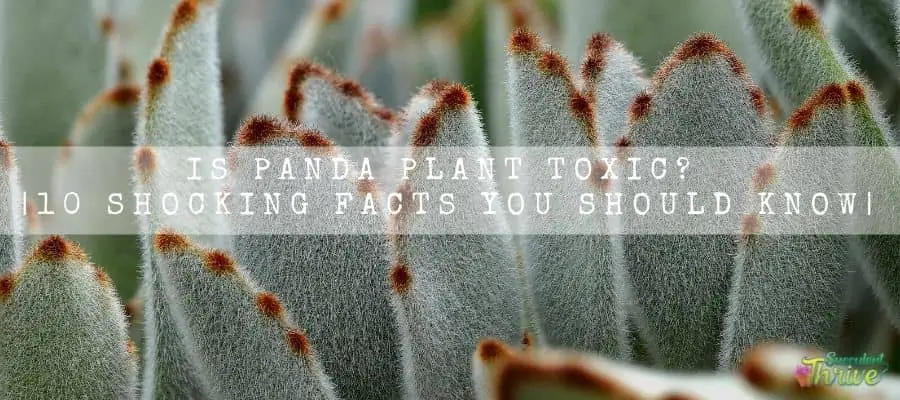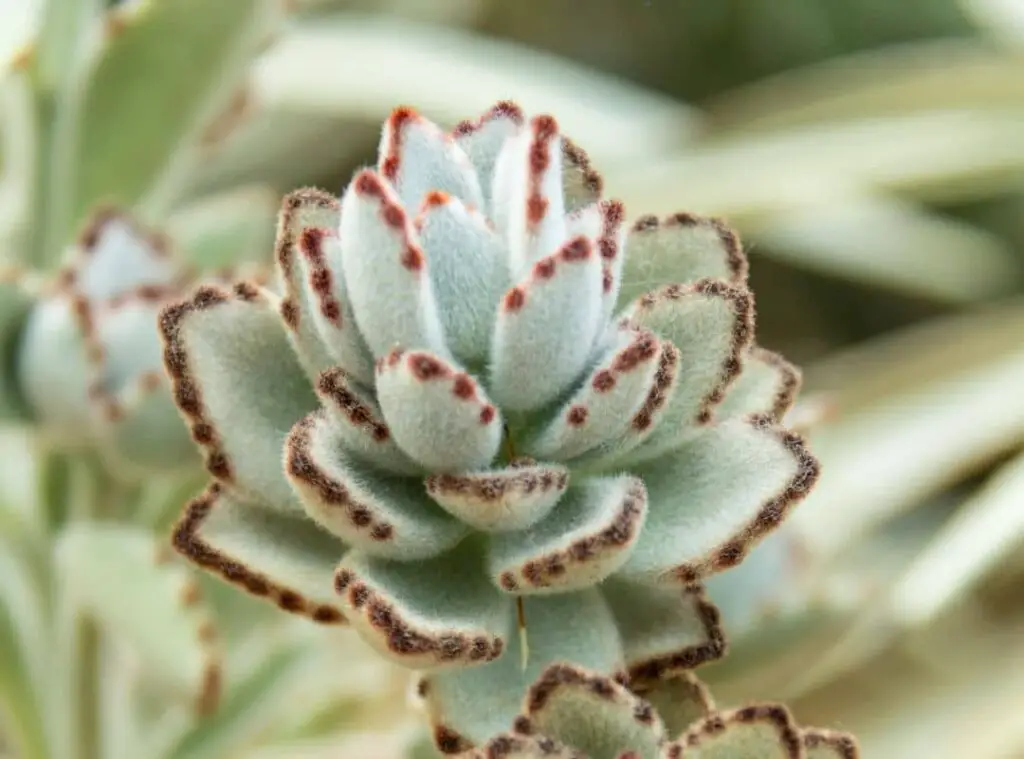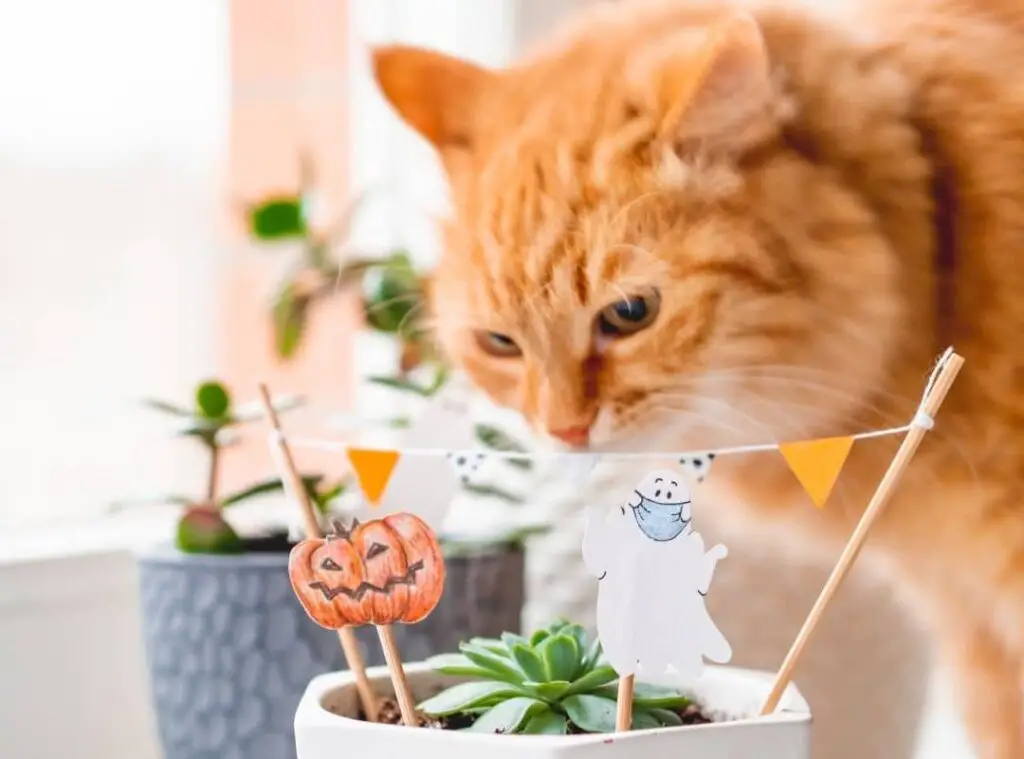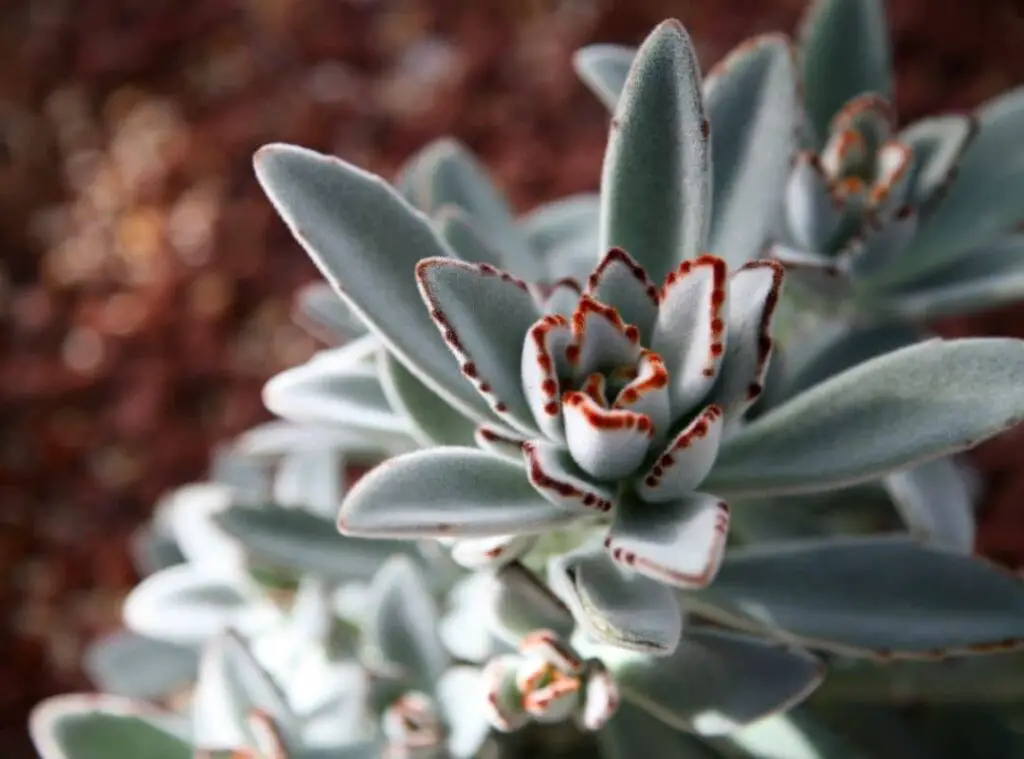Kalanchoe tomentosa ‘panda plant’ is an attractive small succulent. But is the panda plant toxic?
In this article I am going to reveal to you some interesting facts about panda plants and their toxicity.
Panda plants are perennial shrubs which would come up with furry leaves. Those leaves would be gray green colored and white-haired. They would further comprise brown spots on the leaf’s edges

Is the panda plant toxic?
Panda plants are toxic to pets such as cats, dogs and for the rest of wildlife. However, it is not toxic for humans.
They consist of bufadienolides cardiac glycosides, and they could cause changes in pulse, severe weakness and abnormal changes in the heart rhythm as well.
There would be symptoms such as vomiting, diarrhea and lethargy. Unfortunately, if someone ingest this plant in larger quantities, it could be fatal for animals.
Read More: Is Pencil Cactus Toxic? | 10 Interesting Facts About Toxic Pencil Cactus |
Which part of the plant is toxic?
All parts of plants are toxic once ingested. Some might think that these plants are animal friendly simply because they are sharing the name with animals, but it is not.
They comprise a toxic sap which could badly affect furry friends of yours.
Why panda plant is toxic?
As aforesaid, panda plants comprise bufadienolides cardiac glycosides and that is what causes all the troubles such as irregular heartbeats, severe weakness and lethargy, abnormal heart rhythm etc.
Further, panda plants could generate insoluble calcium oxalate crystals which could contribute to oral irritation in animals once they get stuck in the pets’ mouths.
Since all parts of the panda plants are toxic, once your pets ingest them, it could affect them on a greater level.
When you come across such a situation, you need to attend to it as soon as possible and treat them.

Animal affected by panda plant toxin
Dogs
Dogs are one of the most affected species to panda plant poisoning. You all know, they would like to sniff anything and would love to hang around with the plants.
In case, if your pets consume the plants, they will regret eating them. The toxins of the panda plants contain insoluble calcium oxalate crystals which could cut your dog’s mouth, and tongue.
Pain and irritation are some of the symptoms of the panda plant toxicity of dogs. You could treat them symptomatically when they get posinosed by these plants.
Having said that, chances are that symptoms could get severe and could cause breathing issues if you do not treat them early.
Further in case your dog bite the plant, it would immediately cause pain and irritation in the mouth.
As such, whenever you spot your dog has eaten the panda plant and if it is showing symptoms such as respiratory issues, hypersalivation, you need to immediately consult the veterinarian and get his instructions.
Cats
the toxin cardiac glycoside is one of the most dangerous toxins for the cats. Since the cats are small, these toxins could create much damage for them.
Few nibbles could create a greater harm for the cats. It would take only a few hours to show the symptoms of panda plant poisoning of the cats.
Initially they would show symptoms such as depression, over salivation and abdominal pains and diarrhea.
Once the poisoning gets severe which means in case your cat has ingested the panda plant in large quantities, it could cause a change in pulse, weakness, lethargy, coldness in extremities, and collapse at the end.
Moreover, it could create cardiac arrests which could ultimately lead to the deaths of the cats too.
Is panda plant toxic to touch
Panda plants could get toxic only if your pets ingest them. Once it is ingested it could cause mild toxicity to severe toxicity depending on the quantities they consumed.

Symptoms of panda plant poisoning
There could be various types of symptoms depending on the panda plant quantities your pets consume,
- Oral Poisoning of the oral areas
- Poisoning of the mouth
- Poisoning of the tongue
- Poisoning of the lips
- Hypersalivation
- Swelling of the lips, tongue, or mouth
- Difficulty swallowing
- Difficulty breathing
- Vomiting
- Issues with respiration
You could spot these symptoms within a short period of time when they consume and ingest them.
When the dogs consume the panda plant, they would tend to drool first and would end up vomiting and having diarrhea.
If in case your pets have consumed a larger quantity of the panda plant, that would create cardiac issues such as arrhythmia and finally cardiac arrests also.
When cardiac arrest takes place in dogs, chances are that your dogs could die. This whole process would take about 12 hours to four or five days.
As such, once your dogs have consumed the panda plant, you need to get the instructions from the veterinarian immediately.
Alternatively, you may also call them and see what the best remedy you could do first at home.
Experts have found that vomiting, diarrhea are the most commonly spotted symptoms and symptoms such as heart issues are somewhat rare when the pets consume the panda plant.
How to confirm the panda plant poisoning
If you want to ascertain whether the panda plants have caused the poisoning of your pets, you need to check for clinical signs first such as irritation in mouth, tongue lips etc.
Further check whether there are symptoms such as excessive drooling, vomiting, difficulty in breathing.
Treatment
First aid
First you need to move your pet from the area and get in touch with the veterinarian as soon as possible.
Next, you need to see whether any parts of the plants are remaining in the mouth. Alternatively, you may contact the animal poison control center also and check on how to proceed with treating your pet.
I would encourage you not to wait until they showcase any symptoms to visit a doctor. Moreover, do not try to induce vomiting if you do not get instructions to do so.
Do not try using hydrogen peroxide as it would cause salivation and mouth foaming.
It is important that you attend to them as soon as they consume the plant. It is always best to do the treatments then and there so that you could avoid any further repercussions.
In case your vet asks you to induce vomiting they would probably ask you to do it by giving them some water or milk.
You could see how they respond to that. After that, immediately bring them to a pet treatment center.
Avoid giving them antidotes as if you practice something wrong here, it will create unnecessary problems.
In case your kid had ingested a poisonous plant, you could simply place your finger in the kid’s throat and make them vomit.
However, you cannot do that with your dogs or with cats, since if you try to do so, you will most probably end up getting bit by them. In addition to that it would cause discomforts in your pets as well.

At hospital
First your vet may try to wash the mouth of the pets. When they do this, it would ensure that the pets could get rid of whatever the leftover plant parts in their mouth, and it could prevent any further repercussions of the poisoning as well.
The cooling sensation of the flush could help to heal the burning problem these pets experience.
After that they will try doing the intravenous fluid therapy which would help to avoid any potential dehydration and to remove the toxin from the pet’s body.
In case your pets are having difficulties in respiration or going through any swelling, they would recommend doing antihistamine.
In case your vet thinks oxygen saturation has become low, they would recommend providing oxygen from placing them in an oxygen cage so that you could get the oxygen level to a safer level.
In case, your pets are going through severe swelling and if they do not get adequate oxygen from these methods, your vets may intubate him and control the oxygen level whilst using the intubation until they become stable in health.
In addition to that, you need to always make sure that you try to keep your pets relaxed and avoid any stress on the heart.
If your vet tried inducing vomiting, chances are that your vet would give activated charcoal and place them on intravenous fluids to control any potential cardiac output.
If the vet identifies any irregular heartbeat sound, they will tend to use an ECG machine so that they could monitor the abnormal rhythms.
Is the panda plant toxic to humans?
Panda plants are not toxic for humans in general. It could only be toxic for pets.
Precautions you can take
Unfortunately the best is to avoid growing them in your yards.
If you still wish to have one of these plants in the gardens, you could add physical barriers and that would avoid any possible poisoning of the plant for your pets.
Further there are some steps which you could practice to avoid your pets consuming the panda plant.
First you need to ensure that you are growing them in a place where your pets cannot approach them.
You could consider placing the plants on shelves or on tables. Apart from that you could use repellent sprays and that would help to keep the pets away from the plants.
In case, if you would like to practice a natural way to avoid the pets reaching your plants, you could add some orange and lemon peels in the pots.
Pets do not usually like the smell of them and would help to keep them away from these plants.

Related questions
Can a panda plant blind you?
Panda plants cannot blind you as they are nontoxic for humans.
Is the sap from a panda plant poisonous?
Panda plant sap is contagious and once your pets ingest them, it could create damages from a mild level to a greater level.
How do you treat panda plant rash?
First if you spot any symptoms such as red rash within a short period of ingesting them, and if you spot any bumps, blisters, patches, swelling and itching, you may decide these symptoms occur due to a rash of panda plants. To treat them, you could follow the below guidelines.
You need to first rinse the skin whilst using a rubbing alcohol, degreasing soap. Alternatively, you may also use a specialized poison plant washes and detergent along with lots of water.
Keep rinsing them so that those solutions would not dry on the skin, and it will avoid further spread.
After that you need to scrub under nails using a brush.
Apply a hydrocortisone cream and that would help to reduce any itching and blistering. Always adhere to the labelled instructions of them.
If you feel drowsy, you need to immediately consult a doctor and get his instructions.
Read More: Kalanchoe Tomentosa Varieties | 7 Super Cute Plants With More Facts |
